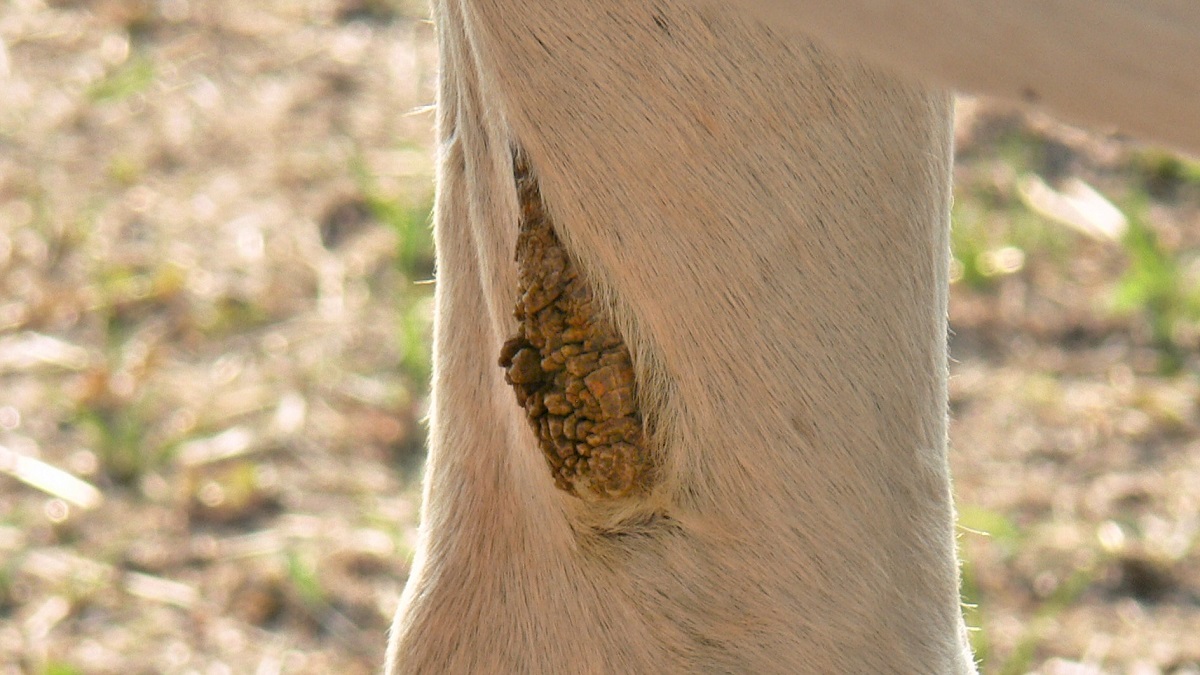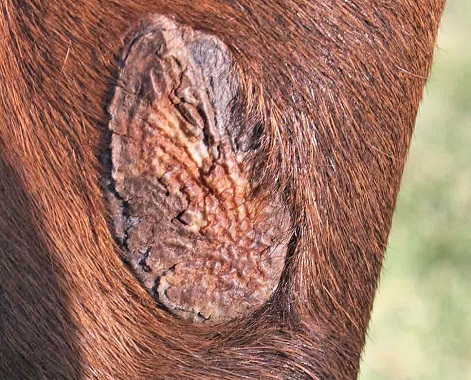What Are Chestnuts and Ergots on Horses?

Our readers help us. This publish might comprise affiliate hyperlinks. We earn from qualifying purchases. Study Extra
When speaking chestnuts, horse individuals often seek advice from the fiery purple horses with purple manes and tails. Nonetheless, do you know that “chestnut” can also be an anatomical time period and never solely a coat shade?
Having a full image of the horse’s anatomy can assist us perceive and take care of them higher.
Understanding what chestnuts and ergots are and what to do with them needs to be a part of each equestrian’s training.
That can assist you with this, we’ve got written a newbies information to chestnut and ergots on horses.
What are Chestnuts on Horses?
Chestnuts are small keratin deposits on the internal aspect of the horse’s legs. They’re discovered simply above the knee on the foreleg and under the hock on the hind leg.
Chestnuts are believed to be the remnants of some a part of the horse’s long-lost toes. Thousands and thousands of years in the past, the ancestors of horses used to stroll on a number of toes, versus trendy horses who stroll on a single enlarged toe.
Nonetheless, not all consultants share this perception. British vertebrate paleontologist Darren Naish is skeptical about chestnuts being vestigial toes on horses. He argues that chestnuts are “not related to the metacarpus or metatarsus, the one locations the place digits happen.”
Supporting his principle is the truth that the splint bones on both aspect of the cannon bone are the vestigial 2nd and 4th toes of the horse.
Though we don’t know why precisely horses put on chestnuts on their legs, there’s definitely extra to find out about them.
What’s the Goal of Chestnuts on Horses?
The true objective of chestnuts on horses is debated within the equestrian group. Some individuals consider they’re vestigial scent glands just like those we see on llamas and deer. Others argue they’re the equal of the carpal pads of pawed animals like cats and canines.
No matter is the actual purpose they’re there, chestnuts are helpful constructions in a number of methods. As a result of their measurement and form are distinctive to every horse, chestnuts can be utilized for identification, just like fingerprints in people.

These tough protrusions additionally come in useful when horses scratch their face on their legs. What’s extra, urgent on the chestnuts causes slight discomfort, which is usually sufficient to make cussed horses quit their legs for cleansing.
There’s an outdated perception that chestnuts assist horses see at the hours of darkness, which is why they’re additionally known as “evening eyes”. Nonetheless, there’s no scientific background to this assumption.
Whereas most horses have chestnuts on each the entrance and hind legs, not all equines do. Chestnuts are lacking from the hind legs of donkeys and zebras, and even some horse breeds equivalent to:
- Icelandic horse
- Caspian horse
- Banker horse
Additionally learn: Final Horse Anatomy Quiz (15 Questions)
Ought to You Take away Chestnuts on Horses?
Due to their tough and crusty look, many individuals typically assume chestnuts are some type of pores and skin illness and have to be eliminated. Nonetheless, they’re a wonderfully regular a part of the horse’s anatomy and never a results of sickness or an infection.
You must by no means fully take away chestnuts on horses. Nonetheless, since they develop repeatedly all through a horse’s life, some house owners trim them again after they get too lengthy.
Trimming a horse’s chestnuts is widespread in exhibiting, because it makes the legs look tidier. This could simply be completed by your farrier when your horse is due for trimming or shoeing.
Since chestnuts are made up of the identical insensitive materials because the hoof wall, submitting them down doesn’t damage the horse.
Some horses even nibble on their chestnuts and trim them themselves!
When the chestnuts are nonetheless comparatively flat, you may as well peel off the outer layers by hand or scratch them off with grooming gloves. Nonetheless, longer chestnuts needs to be moistened with child oil or petroleum jelly in a single day as they might pull on the pores and skin and trigger discomfort when peeled.
Right here’s a satisfying video of a farrier peeling off a horse’s chestnut by hand:
What are Ergots on Horses?

Just like chestnuts, ergots are small keratinous protrusions on the underside of the horse’s fetlocks. Not all horses have ergots; some have them on all 4 ft, whereas others lack them altogether.
The phrase “ergot” comes from the French phrase for “rooster’s spur”, which is sensible given the looks of those constructions. Whereas all horse breeds can have ergots, they’re commonest and largest in horses with feathers.
Most horses have very small ergots the scale of a bean or a pea, however they will additionally develop to a number of inches lengthy. Not like chestnuts that modify in measurement on every leg, ergots are roughly the identical measurement on all 4 legs.
Why Do Horses Have Ergots?
The most well-liked perception is that ergots are what’s left of the only pads horses used to stroll on hundreds of thousands of years in the past. These pads are nonetheless intact in different odd-toed ungulates like tapirs and rhinos.

Identical to chestnuts, ergots might also be vestigial remnants of the traditional equine toe and have little sensible objective.
With that being stated, consultants have advised that ergots may play a job in channeling water away from the horse’s hooves like feathers do. They is also supporting construction for the tendons of the decrease leg.
How Do You Get Rid of Ergots on Horses?
You possibly can do away with the worst a part of ergots on horses with backyard trimmers or hoof nippers. Since ergots haven’t any nerve endings in them, slicing them doesn’t damage the horse.
As with chestnuts, your farrier may also clear up your horse’s ergots on request. Nonetheless, that is often solely essential with heavier horses which have thick feathering and enormous ergots.


